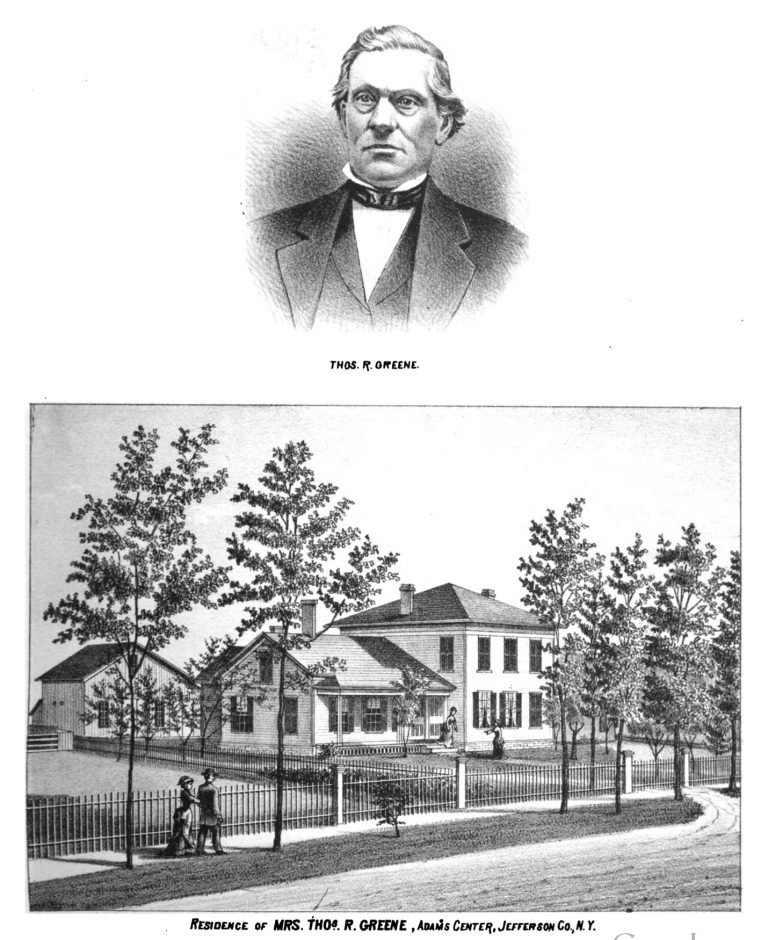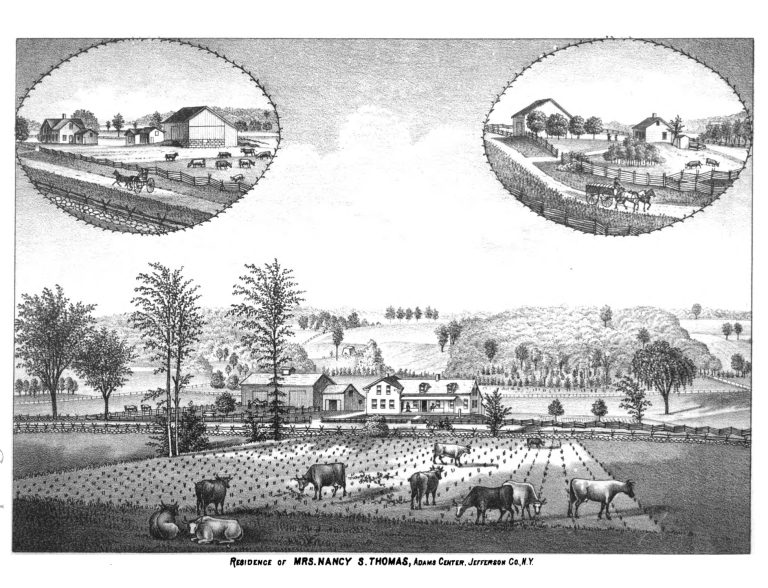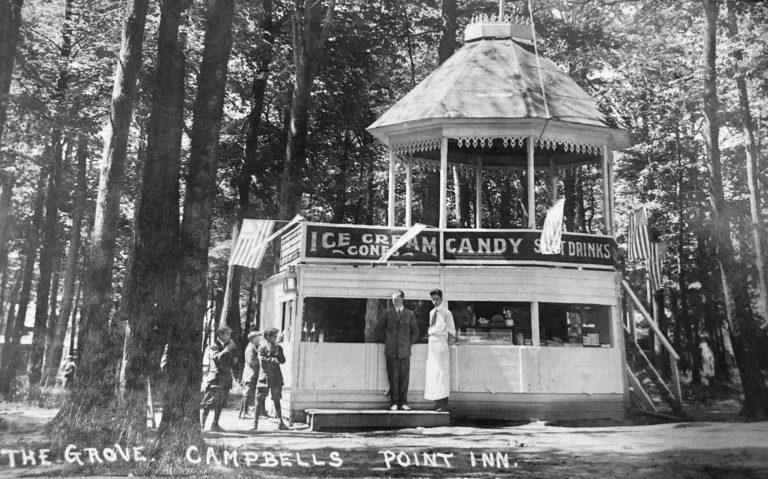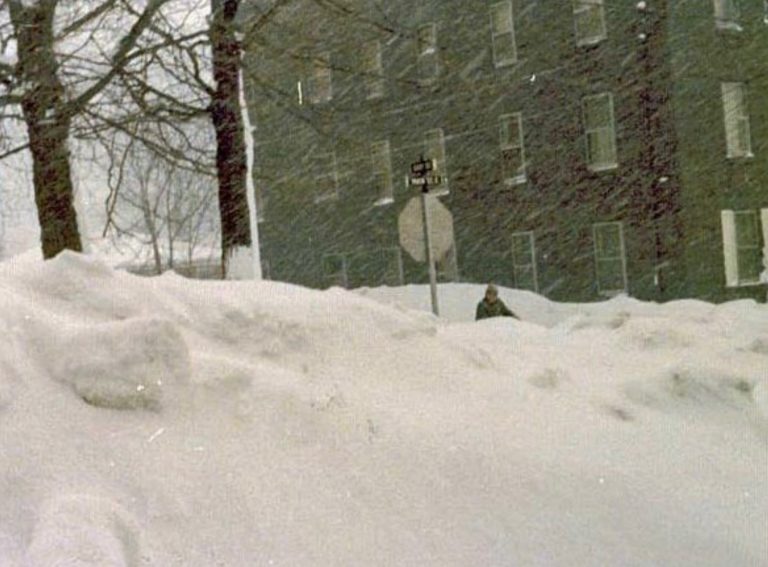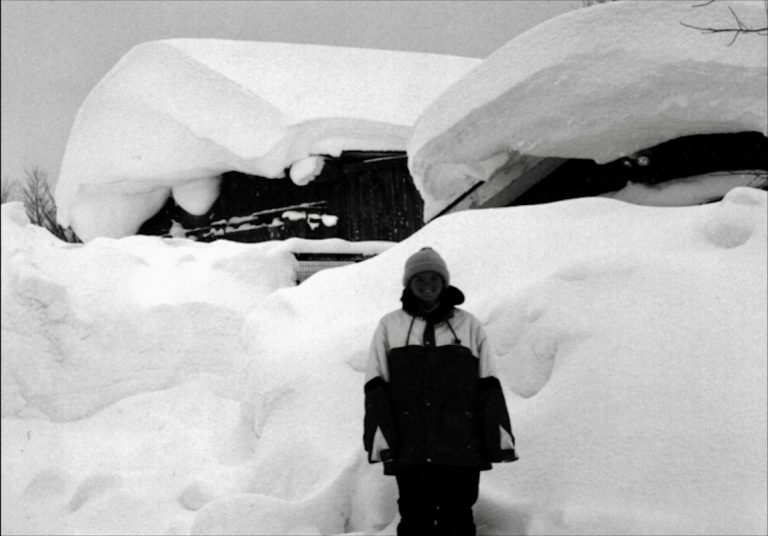Freak Hail Storm Surprises North Country With Ice Nearly A Foot Deep
The following account of a severe hail storm in the North Country was originally printed by a Sacramento newspaper on July 11, 1877, and portions of the same storm were printed in the Watertown Daily Times on the day of the event, July 6. The storm killed many animals in the Rodman and Adams Center area, with losses totaling $100,000, or just shy of $3,000,000 in 2024 dollars. Special thanks to Shari Simmons Groce for forwarding the Sacramento article, which resulted in the location of the Watertown Daily Times article.
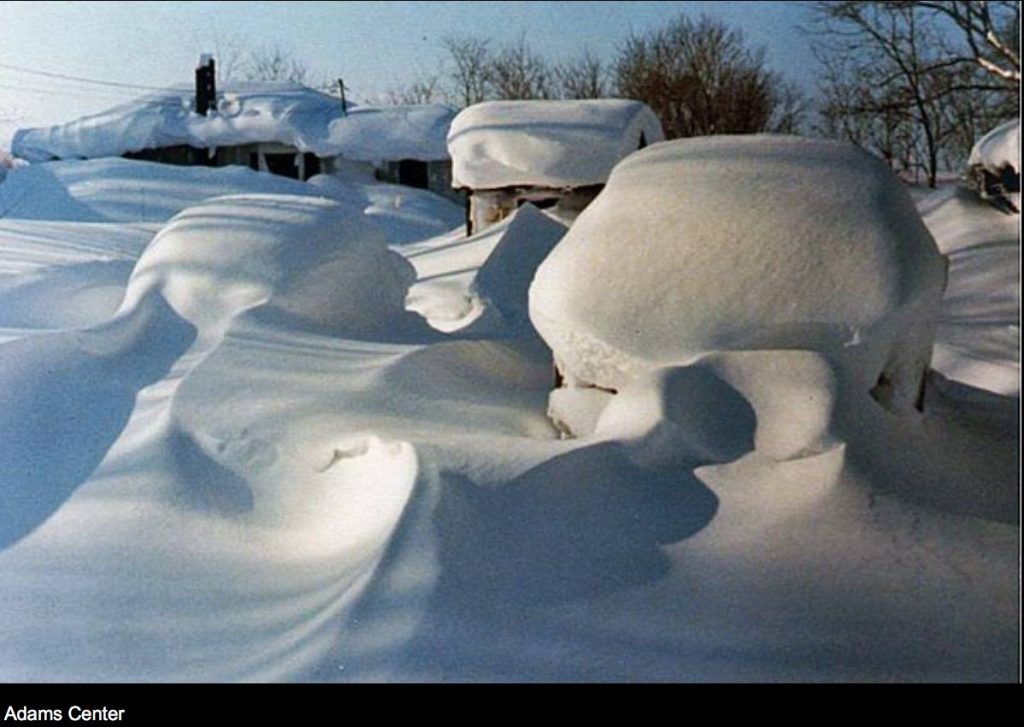
Terrible Hailstorm—Property Destroyed. A dispatch from Watertown, New York, July 11th, says:
The losses by the furious hailstorm that swept over Rodman, Green Settlement, Adams Center, and the adjacent region, on Tuesday, foot up to $100,000. This is principally suffered by farmers, many of whom are ruined.
A gentleman who was in Adams Center during the storm describes the scene as having been terrible. The storm came from the southwest. Hail fell for thirty minutes in vast quantities. The stones were of enormous size, some of them weighing half a pound, and measuring nine inches in circumference. They covered the ground nearly a foot deep.
Many persons were caught in the storm were badly injured before they could find shelter. One man was driving a team near the village, and was so badly hurt before he could leave his wagon and crawl in under a bridge that he chanced to be crossing, that it was feared he would die. A man named Green was hit in the head by one of the hailstones, in reaching out his door to secure a large one that had fallen near, and was rendered unconscious.
Some of the hailstorms were sharp, square pieces of ice, some as large as three by four inches. Horses and cattle were killed in the fields, and growing crops, orchards and gardens utterly ruined for miles.
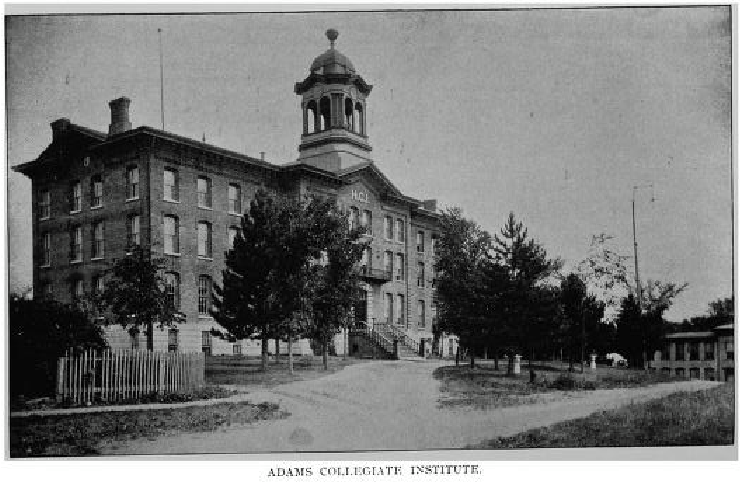
Washburn’s Hotel, Alsop Block, and Hungerford Collegiate Institute were damaged to the amount of several thousand dollars. Expensive memorial windows in the church at Adams were destroyed. Not less than 10,000 panes of glass were broke in the place.
The principal losers by the storm in Adams Center and Green Settlement by the storm are Welcome Clark, Washburn Bros., Evan Griffith, Garrett Bruce, Martin Dearing, W. Jumay, John Smith, M. D. Bance, George Green, Adno Green, Charles Green, I. Kellogg, A. Babcock, A. Coates.
The damage in Adams and vicinity is $60,000. After the storm it took an hour to clear the sidewalks and streets of the accumulation of hailstones. The village presented the appearance of the utmost ruin. Branches of trees filled yards and streets, dead chickens, geese, pigs and dogs were strewn on every side, and every vestige of vegetation was destroyed. The little village of Green Settlement was almost demolished, and great suffering existed among the people. For five miles around the completeness of the ruin presents itself.
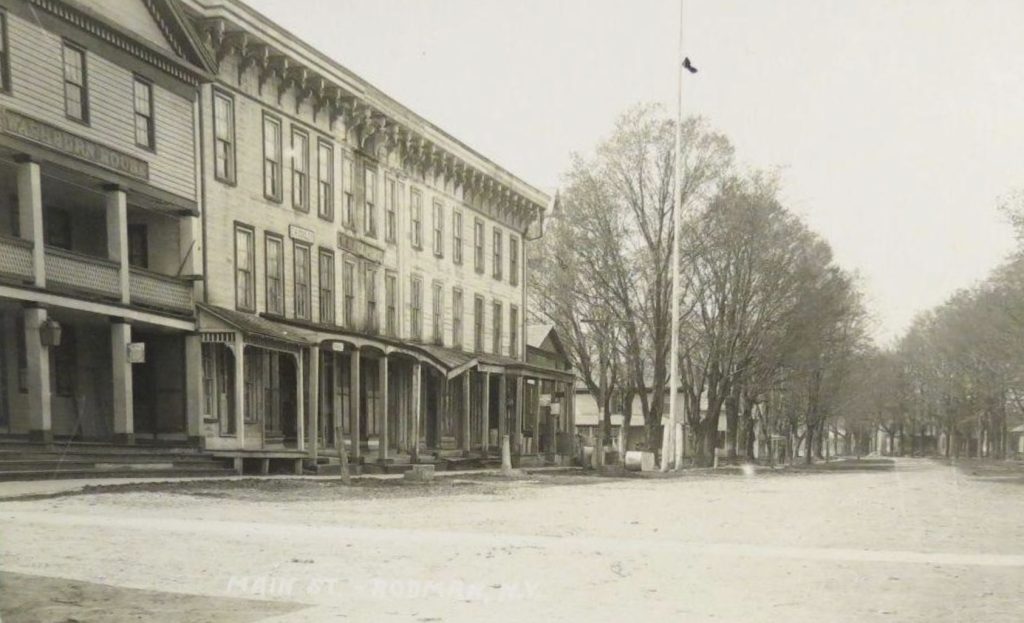
At Rodman the storm of hail lasted fifteen minutes, and was then followed by a deluging rain which lasted as long. A scene similar to that at Adams followed—ruin and desolation on every band. The damage is $40,000 in Rodman. The storm there, although occurring simultaneously with that at Adams, seems to have been distinct from it, as it came from the southwest, while the Adam visitation was from the northwest.
The principal losers at Rodman are: E. L. Simmons, A. Z. Smith, Chauncy Lawton, Martin Waite, B. F. Huestice, Elias Burton, D. LaGross, N. A. Wright, Jos. Wood, Bradley Halstead, George Isham, C. Wyman, J. Brown, L. Spink.
At Adams, previous to the storm, the thermometer stood at 75 degrees above zero. It fell during the storm to 30 degrees, and (fire?) had to be kindled. No such storm was ever known in this part of the State.
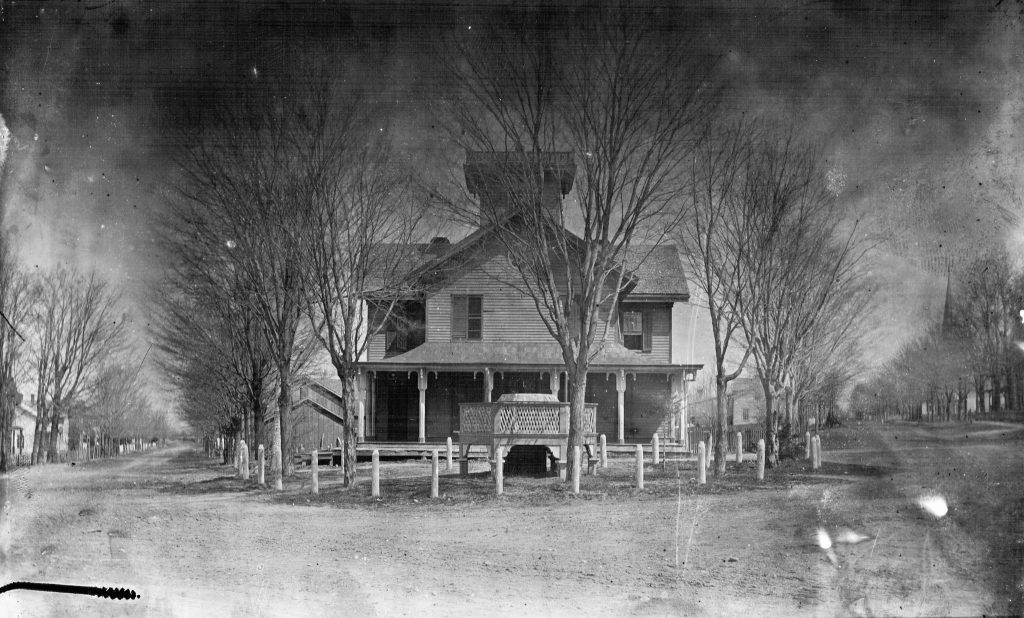
Watertown Daily Times July 6, 1877
At Rodman it had been pleasant during the afternoon, and no signs of a storm had been observed, not even by the prophets. Suddenly, about five o’clock a dark cloud was noticed rapidly approaching from the southwest; it was accompanied by wind. It came up very suddenly and when over the village, and a little to south and east the people were treated to one of the most terrific hail storms that ever visited that section of the county.
Tall trees bowed before the storm. Corn, oats, wheat, potatoes and even grass were destroyed effectually. All the glass on the south side of the buildings were broken. Mr. Hughes, hardware dealer, informed us that 5,000 lights of glass were broken in the vicinity. His entire stock was exhausted in several hours.
Hail stones as large as hens’ eggs were picked up, when the storm abated.
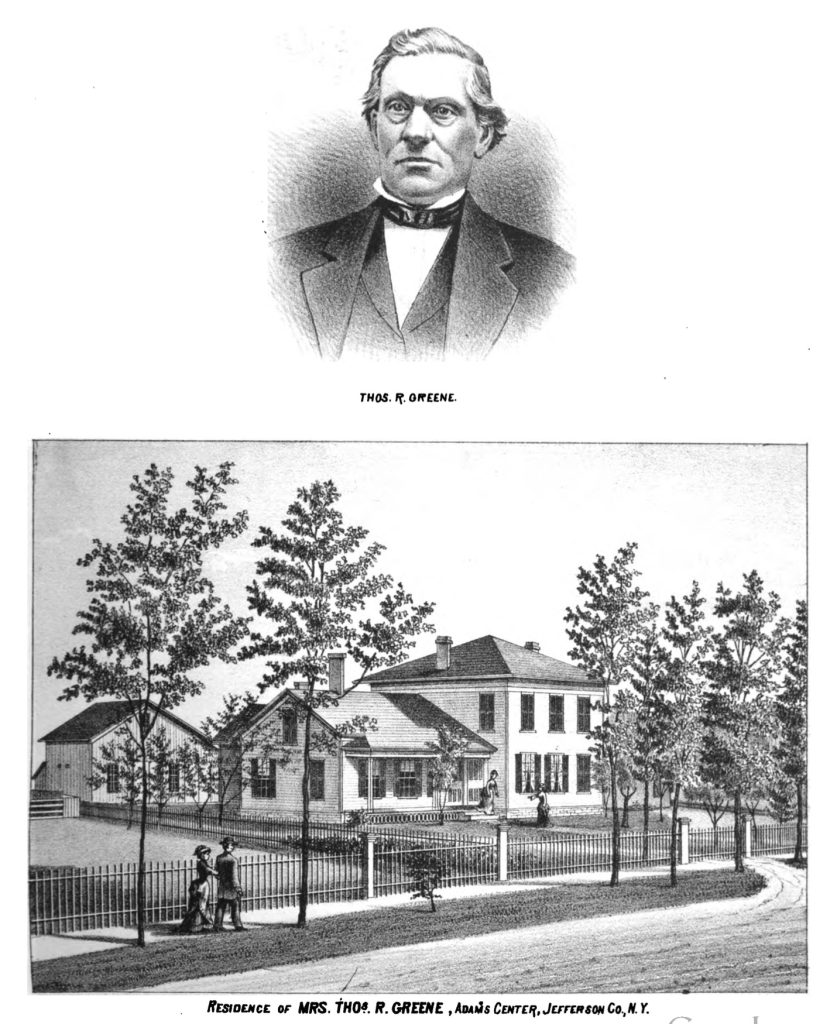
In many instances cows were badly injured by the stones. In every instance they came home bleeding and frightened.
About fifteen minutes after the hail-storm passed over a furious rain storm came up which did as much damage as the chunks of ice. It rained for fifteen minutes with such furry that it was impossible to see two feet into the storm. The oldest inhabitant informed us that the storm was the most severe that ever visited Rodman. Not a single garden remained in Rodman village. The hail stones cut everything into pieces and the drenching rain that followed washed every vestige of vegetation away. A number of gardens are left as bare as the day the sod was turned.
After visiting the ruins in Rodman we proceeded to Adams Centre, where to our surprise, we learned that the storm was more destructive in this section than in the one we had just visited. Mr. A. E. Cooley, who had just returned from a circuit around in the path of the storm, rendered valuable information.
The storm that visited Adams Centre was not the same that destroyed the property at Rodman. It came about twenty minutes later. The wind at the Center was from the northwest, while at Rodman, all the glass in the windows on the south and west sides were broken. It is estimated that the storm lasted nearly thirty minutes, during which time no person ventured out of doors. A number of cows, hens, geese, ducks, chickens and birds were killed.
Hail fell to the depths of eight or ten inches.

It was so cold after the storm ceased that fires were at once built in the dwellings and those who ventured out, dressed in their heaviest clothing.
Sidewalks in the villages were shoveled off the same as after a hard snow.
Dead robins and sparrows were picked up in the streets both in the village and in the country by the basketfull.
Women and children were frightened in many instances beyond description. Even the old watch dogs, fearing their last days had come, howled piteously.
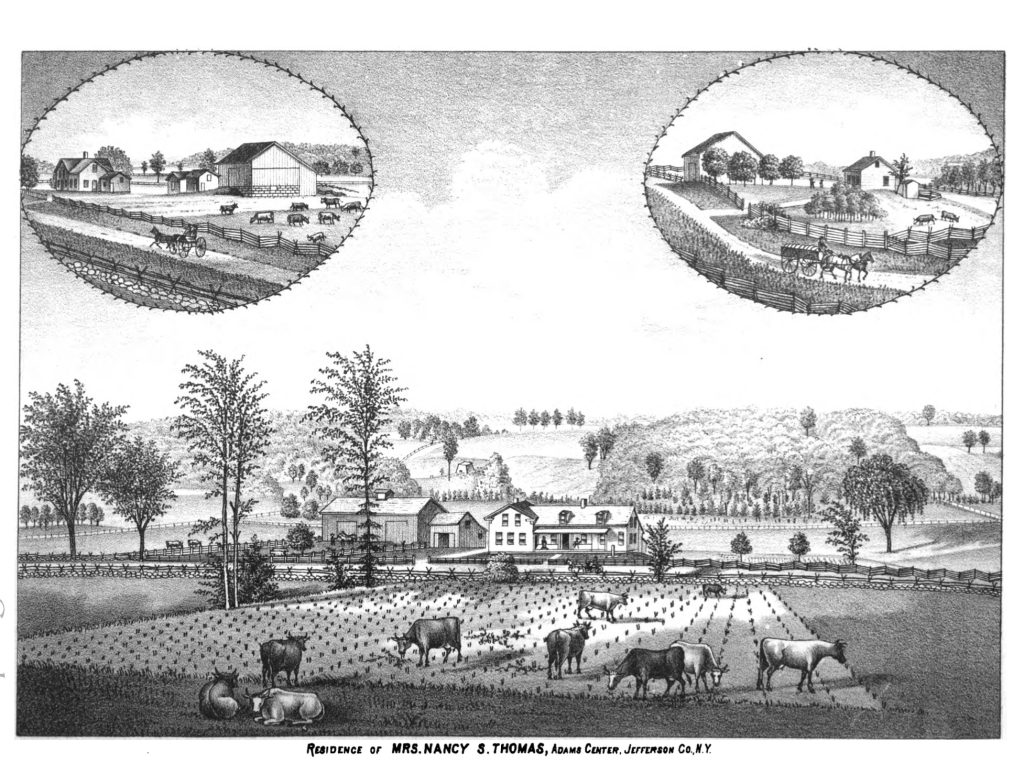
Plenty of hail stones were found that weighted half a pound. Many of them were measured, some measured seven inches in circumference. Others are described as solid chunks of flat ice, an inch in thickness. One was measured that marked 4.5 inches one way and 3.5 inches the other.
In one instance the shingles on a roof were all torn up and everything but the rafters destroyed.
The storm came with the most fury over what is known as Green’s Settlement, about two miles west of the village. In this locality, at the present time, a person cannot tell a cornfield from a potato patch. Nothing but devastation can be seen. The farmers in this section will not be able to save a hill of corn, a sheafe of wheat, oats or barley, and in most instances not a ton of hay. Besides having lost their grain and grass crops, their fruit trees are not only ruined but the trees destroyed. It is a sad sight to go along the road in this section and witness the stalks of everything trampled in the dust as effectually as though it had been trodden under by horses.
